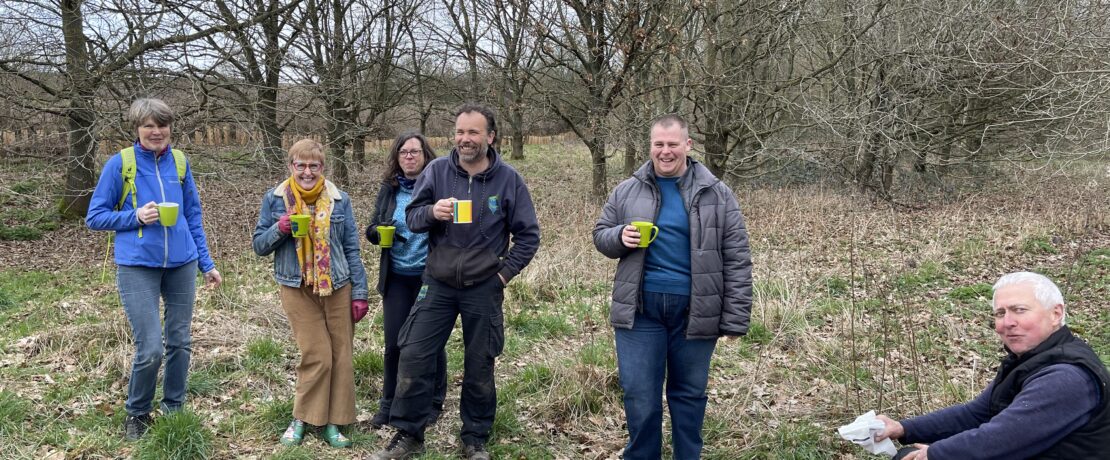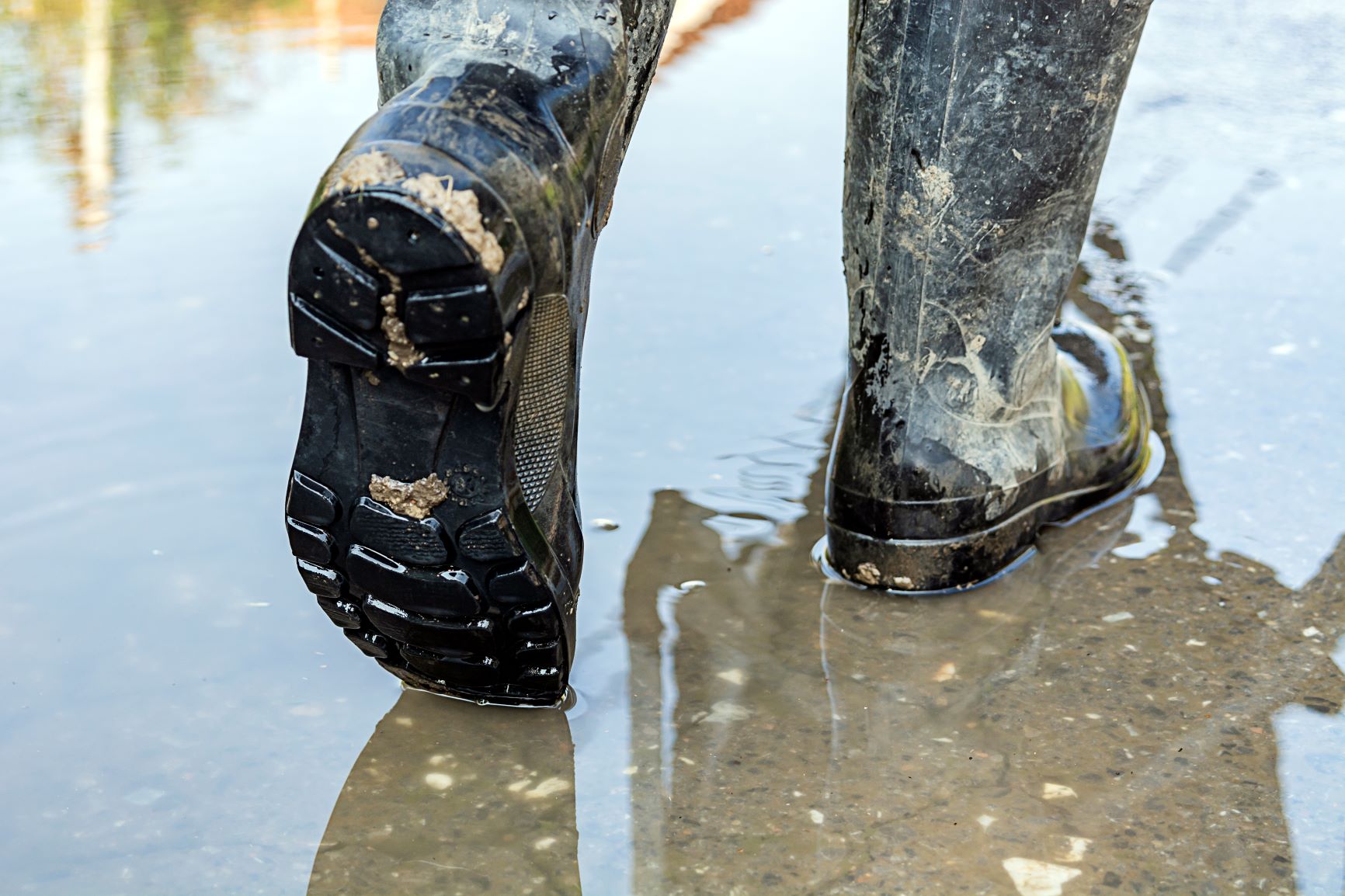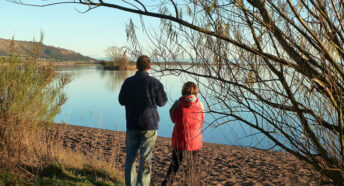How to plant a hedgerow – step by step
Before winter ends, help nature: plant a hedge. Here’s a step-by-step photographic guide of how to plant a hedgerow – as demonstrated by wonderful hedgerow volunteers!
Native hedges are not only havens for nesting birds, mammals, and bees. These natural barriers can absorb water and carbon emissions, offering protection against flooding and climate change. Choose edible species and you may even harvest berries and nuts from your hedge. Their widespread loss since the Second World War means our fields, gardens, and countryside have lost this economic, ecological green network. That’s why CPRE are campaigining to increase our nation’s hedges by 40% by 2050.
Small bare-root hedge plants, often called whips, can be planted between November and March, so there’s still time to plant a hedgerow now! Our Hedgerow Heroes project saw volunteers from several organisations help us plant over 2km of hedgerow. Here, volunteers at Countess of Chester country park demonstrate how to plant a hedge.
How to plant a hedge
First task – choose your location. This will help you decide what types of plants to choose for your hedge. Your place must be bare soil. Take care not to remove a valuable habitat, such as a meadow or marsh, in the quest to find hedgerow site. You could swap a fence for a hedge, fill in gaps in a boundary, or separate fields and woodland. Look at whether you could add a small tree at any point along your hedgerow site.
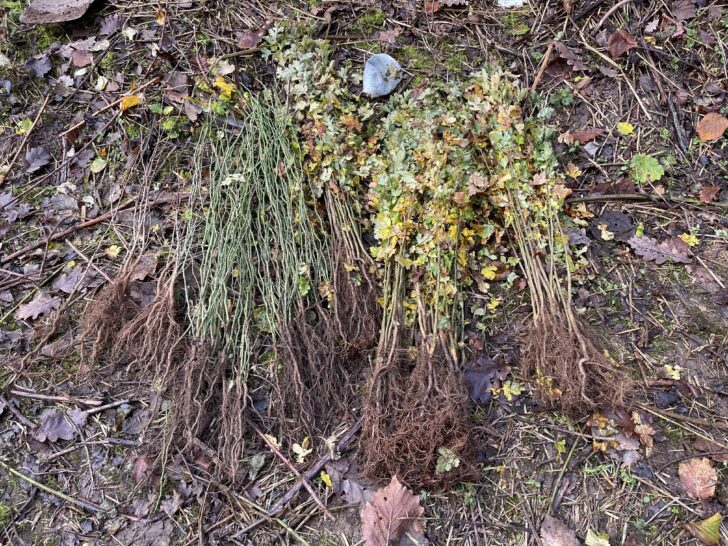
Choose your plants: look for native bare-root hedge plants, or whips. These dormant plants are suitable for planting between November and March. They are also more affordable than large established plants. We chose Hazel, Hawthorn, and Dog Rose. OTher examples are Guelder Rose and Holly. Aim for a handful each of several species, so your hedge is more biodiverse. We also added Hornbeam, a larger tree. Rowan, Hornbeam, and Field Maple are examples of small trees which you can place every 20-30 metres in a hedge.
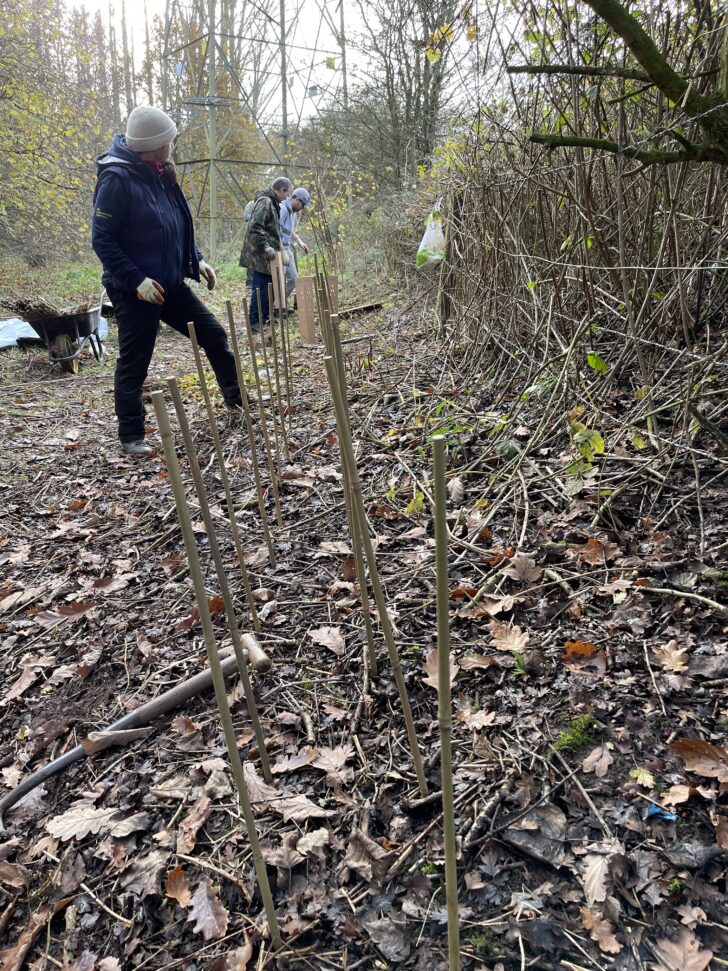
Mark out your hedge design: use bamboo canes to mark out where your plants will go. Place them in a zigzag formation, so it creates a staggered double row. Suffolk Wildlife Trust recommend about six plants per metre. Give them space from neighbouring boundaries or trees, allowing the hedgerow room to fill out.
Keep the plants soaked: bare-root plants like to remain damp. Keep them in a bucket or keep them well watered while you plan out your hedge.
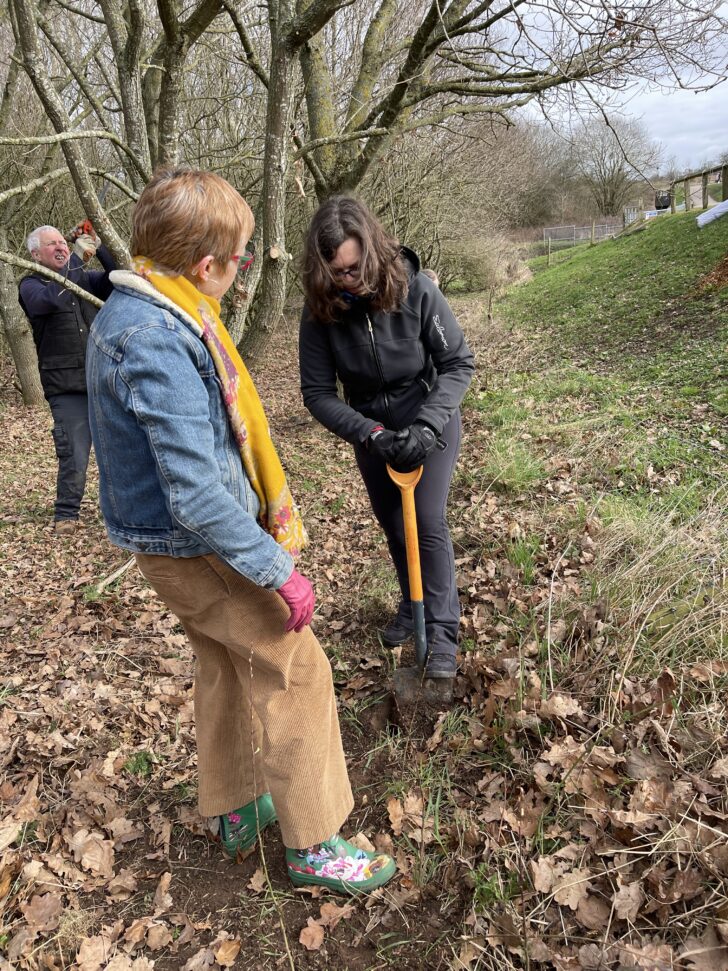
Start digging: dig a hole the same height as the roots of your plant. Ensure the ground is free of grass or other vegetation. The RHS has a Hedge Tips page for advice on your location’s type of soil or drainage.
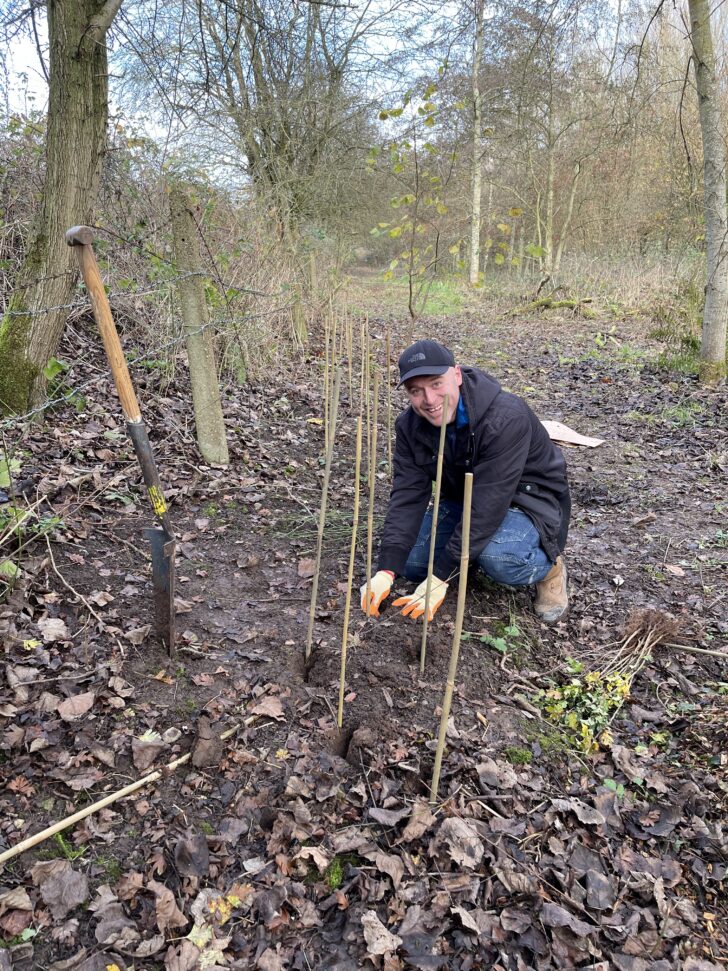
Plant the whip: add the hedge plants in clusters of at least three of the same species together, before adding something different. If you add any taller plants like hornbeam or field maple, place these every 20-30 metres. Sit the plant in the hole ensuring the roots are not squashed or damaged. Where the roots divide from the stem is where the soil level should begin.
Heel it in: ‘heel’ in the plant. Make sure it has plenty of soil around it in the hole, and press this in to support the plant, then use your hands or heel to firm the soil around the top.
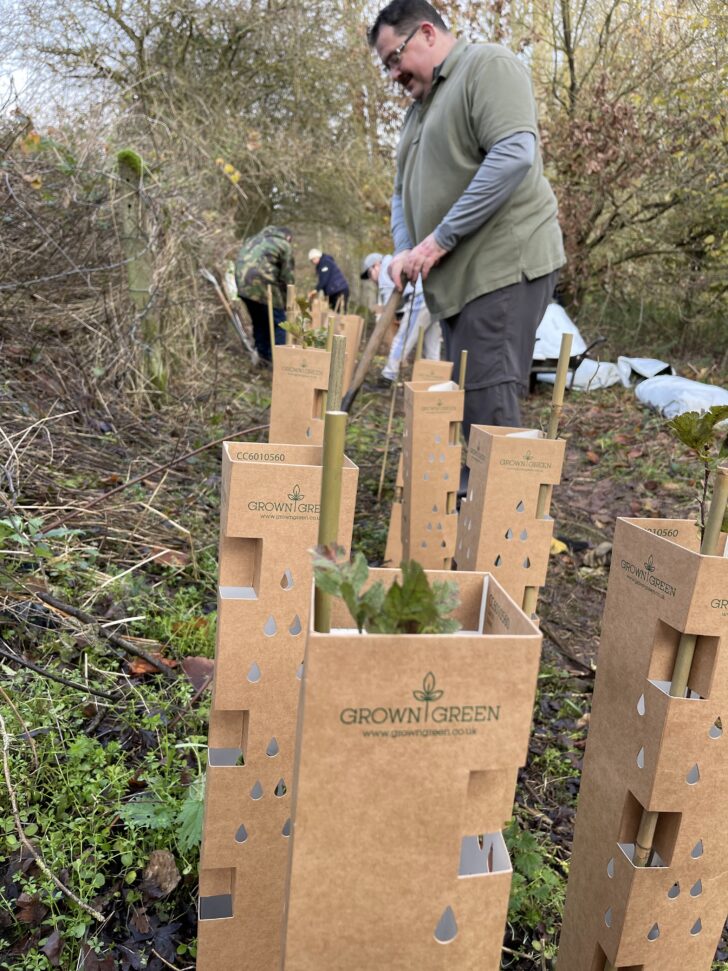
Water, if the soil is dry. You can also add a mulch to the top to prevent weeds.
Protect the plants: return a bamboo cane next to each plant, then use this to anchor a biodegradable plant guard over the top. Avoid using plastic guards, as these break up and cause environmental pollution. If you do not want to use a plant guard, you can plant more hedge plants instead. Some organisations choose to plant a third more plants instead of adding guards. This additional third is for the deer and other wildlife who are fond of young hedge foliage.
In the succeeding months, remove wild plants which sprout around the base. These weeds are only competitors while plants are small; they are no longer an issue when your hedge is well-established.
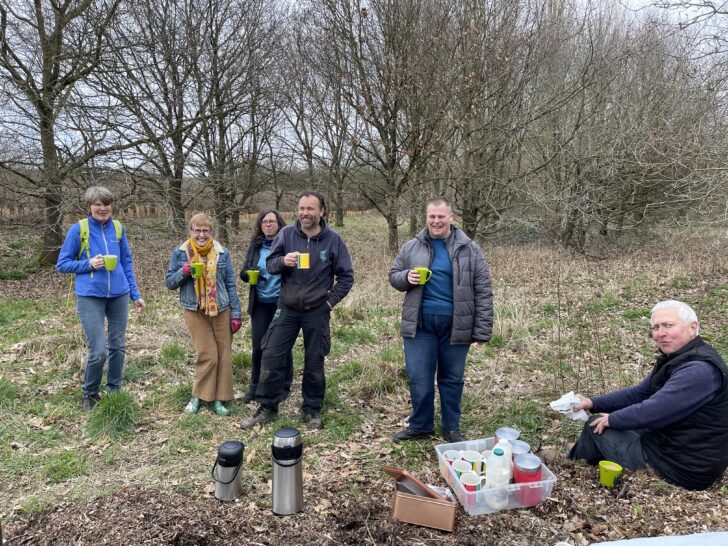
Time for a brew. You all deserve it – you have just planted a hedgerow!
For more information about hedges, this is an RHS article about the best types of native hedging.
Also, check out the CPRE Hedge Fund report about the economical and ecological benefits of hedgerows.
